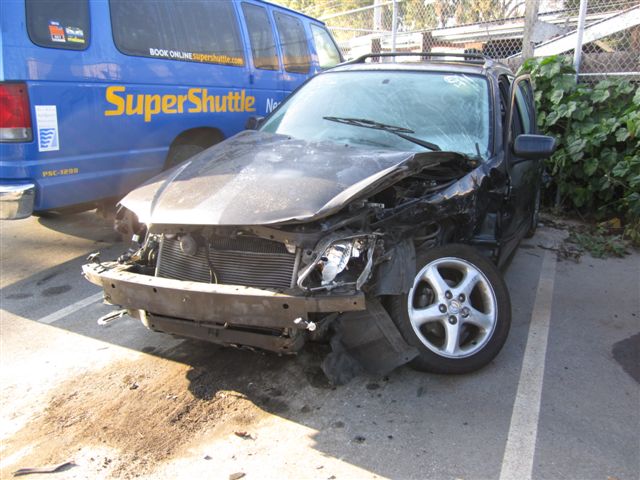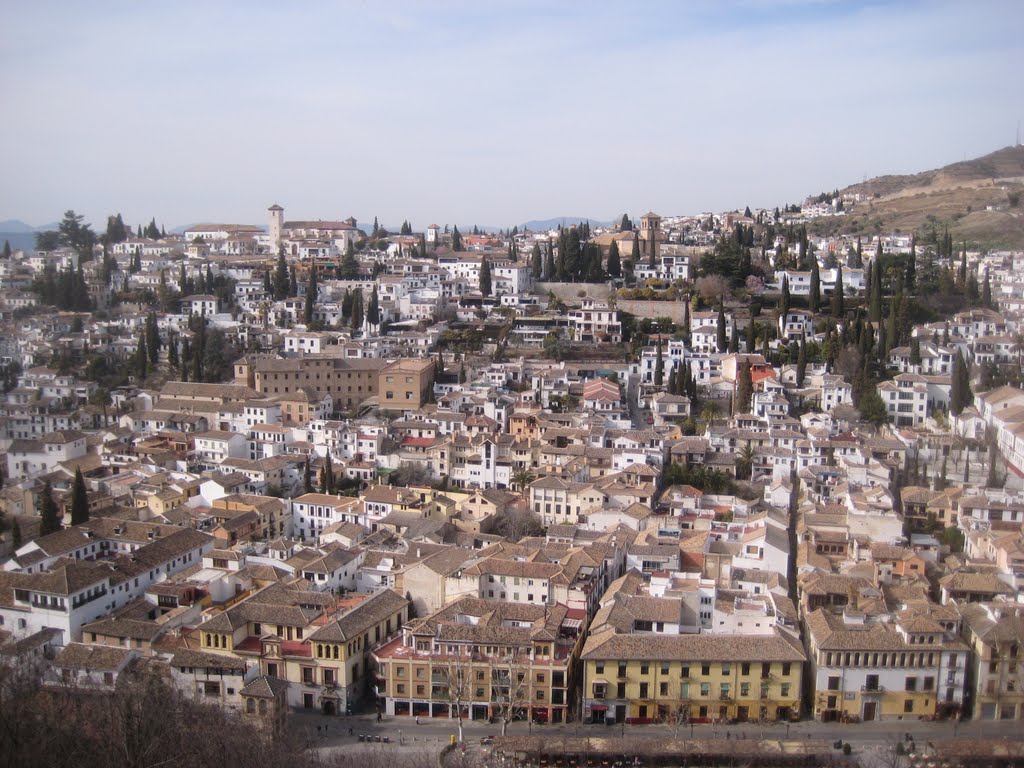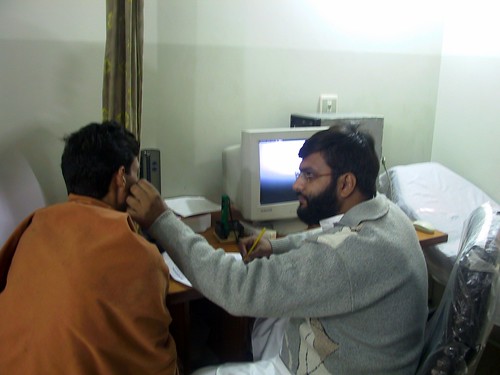
AMENDS delegates 2012
This convocation of 40 youth leaders from 20 countries (mostly Middle East and North Africa) is a remarkable effort from the Stanford student community. The youth are at Stanford for 5 days, and as part of the time, are giving talks which are free and open to the public. For more information, see: http://amends.stanford.edu/
Rawan Da’as from Jordan: Photographic Skills for Little Wonders
Using photography classes as a way to reach children in refugee camps, helping them think about apprenticeship / job training, relating to other people and the environment. Building their creative thinking and artistic skills and empowerment. Also train photographers to consider creating a career from their art by selling photos.
Need to invest in youth, and help them to be the change.
Aymen Abderrahman from Tunisia: Karari.org (mydecision)
A few days before election (first free elections) in Tunisia, only 55% said they planned to vote. As a stunt to shock people into action, a group raised a banner of deposed dictator Ben Ali. The citizens did take action, tearing it down, revealing a second, hidden banner, reading “Dictatorship can come back: Vote on ….)” See the YouTube version that Aymen played. http://www.youtube.com/watch?v=Nu-WjbD9NbE
Growing up, he was not permitted to speak out on political issues. 1/14/2011: The start of the Arab Spring with the deposing of dictator Ben Ali.
Karari.org is a web 2.0 website to maximize participative democracy. Allows user to interact with each other on political issues–be not just consumers but creators as well. (Available in English, French, Arabic). “Expert” tagged comments pinned to the top for people to learn from. Collective “like” votes determines ordering of comments. Supports social media features like: friends, sharing of links, articles, and status updates.
Political Rights Tools:
- Voices
- Petitions
- (yet to come) chat
Lists constitutions of 46 countries of the world.
Stats:
- 30% of Tunisians user internet
- 2.8M FB accounts, hope to get 10% as users of Karari
Need creation of jobs (40% of college grads unable to find jobs). Seeking full-time webmaster, a data server & 4 computers & budget for a marketing campaign.
Heather Libbe from US (studied in Israel, West Bank, Jordan for 3 months): Euphrates Institute
Peace & Sustainability focus of her study
1) Complexity of conflict
2) Religious fundamentalism
3) Peace & Sustainability (intertwined)
Passion for peace building: Building bridges between Middle East & West through educational programs
1) Travel studies (adult trips & study abroad)
2) Fellows program (research)
Euphrates Institute: Energy, Security, and Religion: “Prepare for Peace” (founded by Iraq analyst from CIA for 2 years)
End the clash of civilizations (Muslim and west) in our life time:
Reach 20% of people (Everett Rogers, of Stanford) social change tipping point.
“Inform. Inspire. Transform.”
Fellows Program: based at Principia College (open to US undergrad & grad students): Campus activities on their own campuses.
13 students with individual research projects (e.g. water in Israel/Palestine, Islamic art, role of Turkey as mediator)
Goal to triple fellows program, expanded to other locations. http://www.euphratesinstitute.org
Brian Pellot: Free Speech Debate in the Digital Age
10 principles for global free speech posted at http://www.freespeechdebate.com
Naguib Sawairis
Coptic Christian in Egypt. Arrested for tweeting picture of Mickey & Minnie with beard & veil
IDF whistleblower who leaked documents
Placed on house arrest, super injunction (can’t even cover the
fact that there is an episode/injunction in the media)
2 billion users of the internet and social networks. Opportunities and challenges for free speech.
Countries no longer control, companies do (Google, Twitter, FB)
Religion, national security, privacy, SOPA
30 grad students running the site, translate principles, case studies.
Sonya Kassis : Watch your Waste e-Museum: Bridging Middle School Students through Art, Science and Technology in the United States and Jordan
Helping to compensate for the cuts in education budgets. Arab American National Museum:
Using environmental issues to connect students between (US, Jordan) on art, culture, advocacy.
Students connect using FB, YouTube, Flickr, hope to have in-person visits (but challenge, since they are middle school students)
Example of project:
Raising awareness of Water issue: The typical American uses 1.6 gallons per flush, which is greater than the daily access to water for cleaning, drinking, and washing in parts of Africa.
Looking at the omnipresent 500ml plastic water bottle: Americans dispose of 50 billion of them per year or 140 million per day. Producing each 500ml bottle takes 1.5 liters of water (not counting the contents) and 125 ml of petroleum. And of course, tap water is perfectly good to drink in nearly all of the country.
250M tons of trash per year from US: (4,837 Titanics worth each year)
Elizabeth Harmon from US: BabSharqi.org (Eastern Gate: Student gateway for planning study abroad in Middle East)
Elizabeth studied for a year in Syria (moved to Jordan after Arab Spring in Mar 2011) as time-off during her undergraduate studies.
The BabSharqi.org web site (under development) will feature:
- Comprehensive list of program, with user reviews and Q&A forums
- Info about scholarships and connections with previous scholars
- Plans / backup plans for travel advisories
- Visas, residency permits information
- Info about housing and homestays
- Q&A on transportation, money, tap water, books & libraries, health needs, banks, and the like
- Recommendations for tutors and language exchange partners
Next steps: Western Gate (Arabs -> US), more languages, financial support
Need: funding, developers
Ifrah Magan from US, Chicago: Path to Peace: Story Telling in Somali Communities around the World
Ifrah was born in Mogadishu Somalia, fled from the war to Egypt for 10 years, resettled to Michigan, then went to Chicago for college.
“Look beyond the pirates and famine, to see the stories and culture,” she asked.
She is working to put together a book of stories of resettlement of Somalis around the world. “Coming from a lawless state, living in a dictatorship for 10 years, now seeing privilege of living in US” Highlight the voices, collaborate with NGO in Chicago (Davis Peace Project) $10K for purchasing library materials for literacy groups and peace workshops. Met for 6 weekly sessions (cultures of Peace, 2 state solution in Sudan, Iraqi history) chance to learn from each other, listen to the individuals tell their stories (to claim their stories and have a sense of ownership). Collaborate with different organizations in US in Diaspora, get the stories of resettlement from Somali refugees (effect of conflict, what peace means to them). In Somalia, people share the same language, are primarily Muslim, yet have had 2 decades of conflict. This is a way to bring voices together of Somali people. There have been 15 transitional federal governments since war started (20 years ago). Something is clearly not working. Let’s hear the people, humanize each story, it’s important for all of us.
Sam Adelsberg from Yale Law: Lowest Common Denominators: Microloans and Economic Opportunity in the West Bank
Although he had been part of a friendship “building bridges” delegation trip to New Orleans, he found that many of his contemporaries on both sides who were not “crossing checkpoints” or “in zones where rockets might fall” were assuming intractable positions. They were shouting slogans or joining Facebook groups, not doing something constructive, perhaps because they were feeling guilty for “not being there”. That degree of remove, Sam said, reinforces inability to see the “gray area.”
So, as a concrete action, he started www.lendforpeace.org a microcredit site for people to make loans to Palestinians in the Occupied Territories.
Launched 2 years ago, it has raised tens of thousands of dollars–and he now wonders how could it be used or applied more broadly.
Lack of jobs (25% unemployment rate): entrepreneurship as a way to spur job growth.
Belief in human right to control your economic destiny.
Giving individuals the power to chase their dreams. Arab Spring showed the power of grass-roots political organizing. Now let’s see the power of crowd sourced fund raising for microcredit.
Sam faced a tough question from a Palestinian woman in the audience who said that the issue is not the economic hardship that Palestinians face. Money is the last thing on her mind. Her consuming thought is freedom. He gracefully acknowledged that his project is not a panacea, or even a direct route to solve the conundrum, but he believes it is something that he can do (with help) to improve the situation and help to build trust through peaceful interaction.





